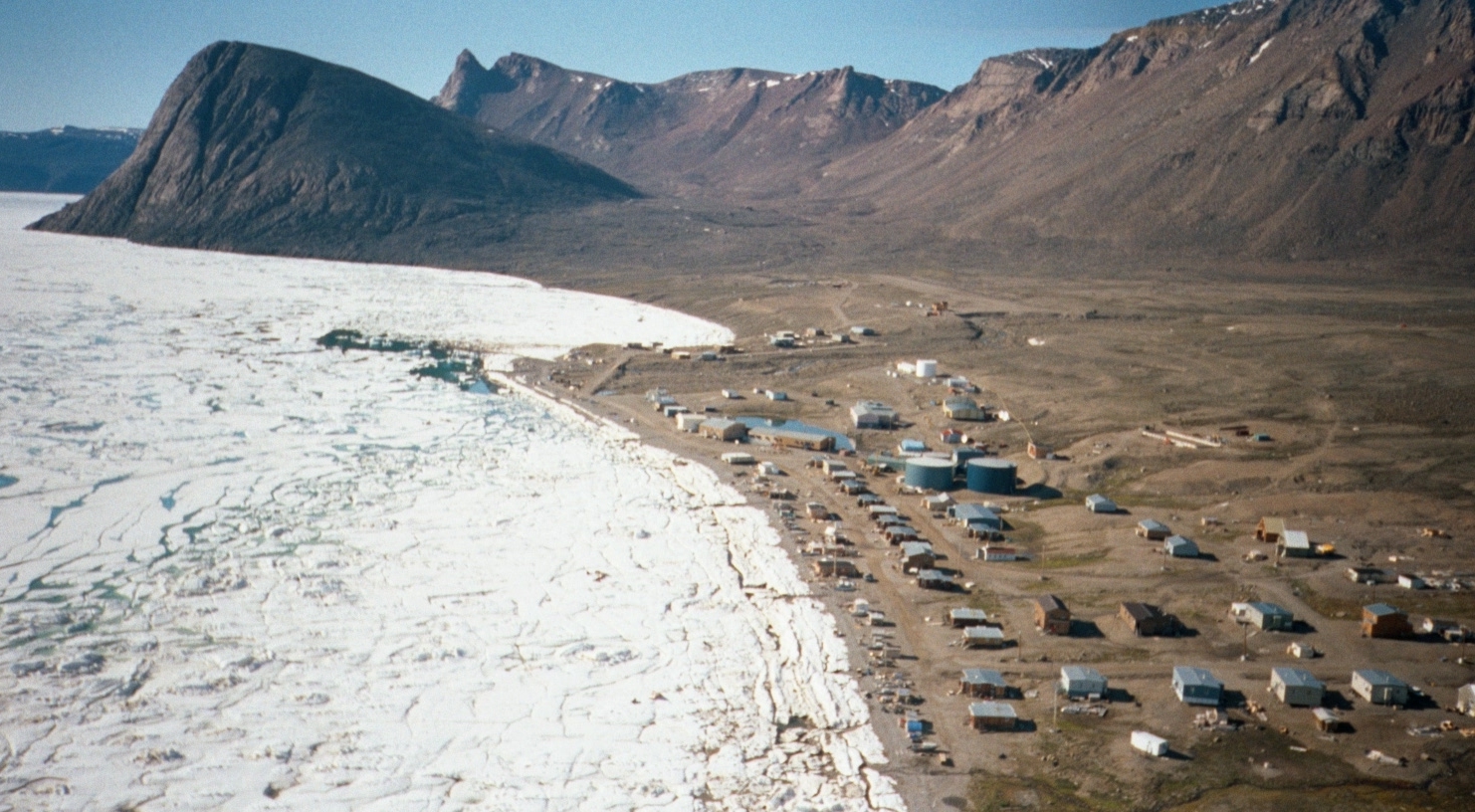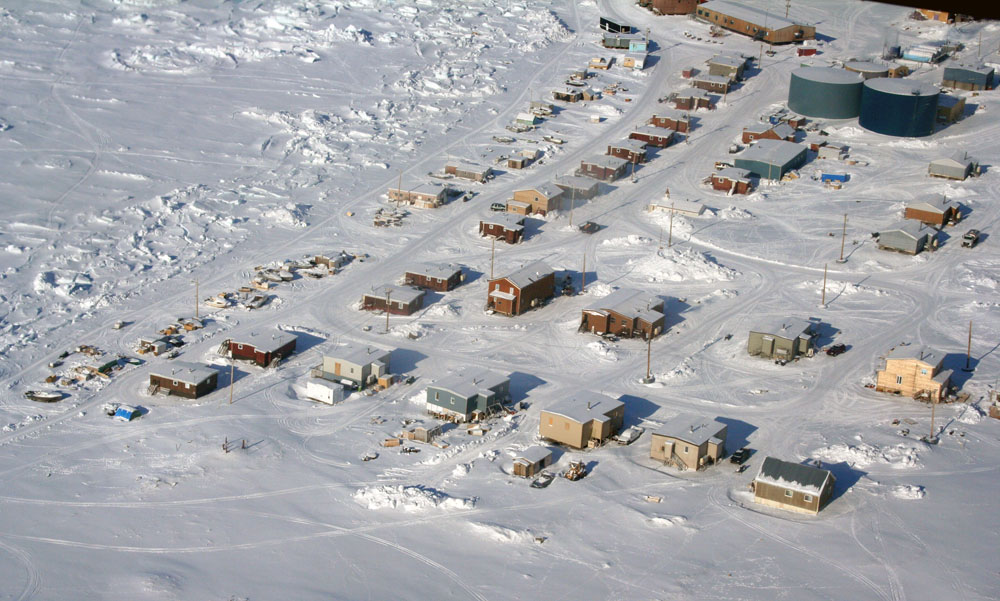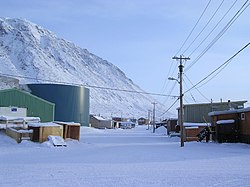Grise Fiord
Grise Fiord is the northernmost municipality in Nunavut territory and is also considered one of the northernmost towns in the world. In the Inuit language ( Inuktitut ) is called the settlement Aujuittuq ( ᐊᐅᔪᐃᑦᑐᖅ ), which means " land that never melts " means ( see also Auyuittuq National Park ). It is located on the south coast of Ellesmere Island in the middle of the Arctic Cordillera and has about 130 inhabitants (of which 85 per cent Inuit ). The name comes from the Norwegian Grise Fiord means " pig inlet "; the Norwegian Otto Sverdrup, who explored the area here 1899-1903, gave him this fjord, because it reminded the grunting of occurring here many walruses to pigs.
The Ellesmere Island is indeed rich in prehistoric sites. In historical times, however, lived here no more Inuit, one sees on the through -withdrawing group of Baffin Inuit, ( later called in Greenland Qillarssuaq, "the great Qillaq " ) in the middle of the 19th century under the leadership of Qillaq from the area to Iglulik and Cape Dorset to North Greenland ran through here.
In 1922, the Royal Canadian Mounted Police at a location designated as Craig Harbour 55 km south-east of Grise Fjord an outpost when the federal government finally in 1953 eight Inuit families from the communities Inukjuaq (northern Quebec ) and Pond Inlet ( north coast of the Baffin Island ) settled (see also Resolute Bay). 1956 shifted the police then the settlement of Craig Harbour to Grise Fiord. Built in 1962, the government introduced a school building and a residential program.
Grise Fiord is located on the high shore of Jones Sound, nestling, and the small plane space serves only charter airlines. Quite often it is not possible to land because of fog. The polar night begins on November 1st and ends on February 9; the polar day lasts 24 April to 18 August.








